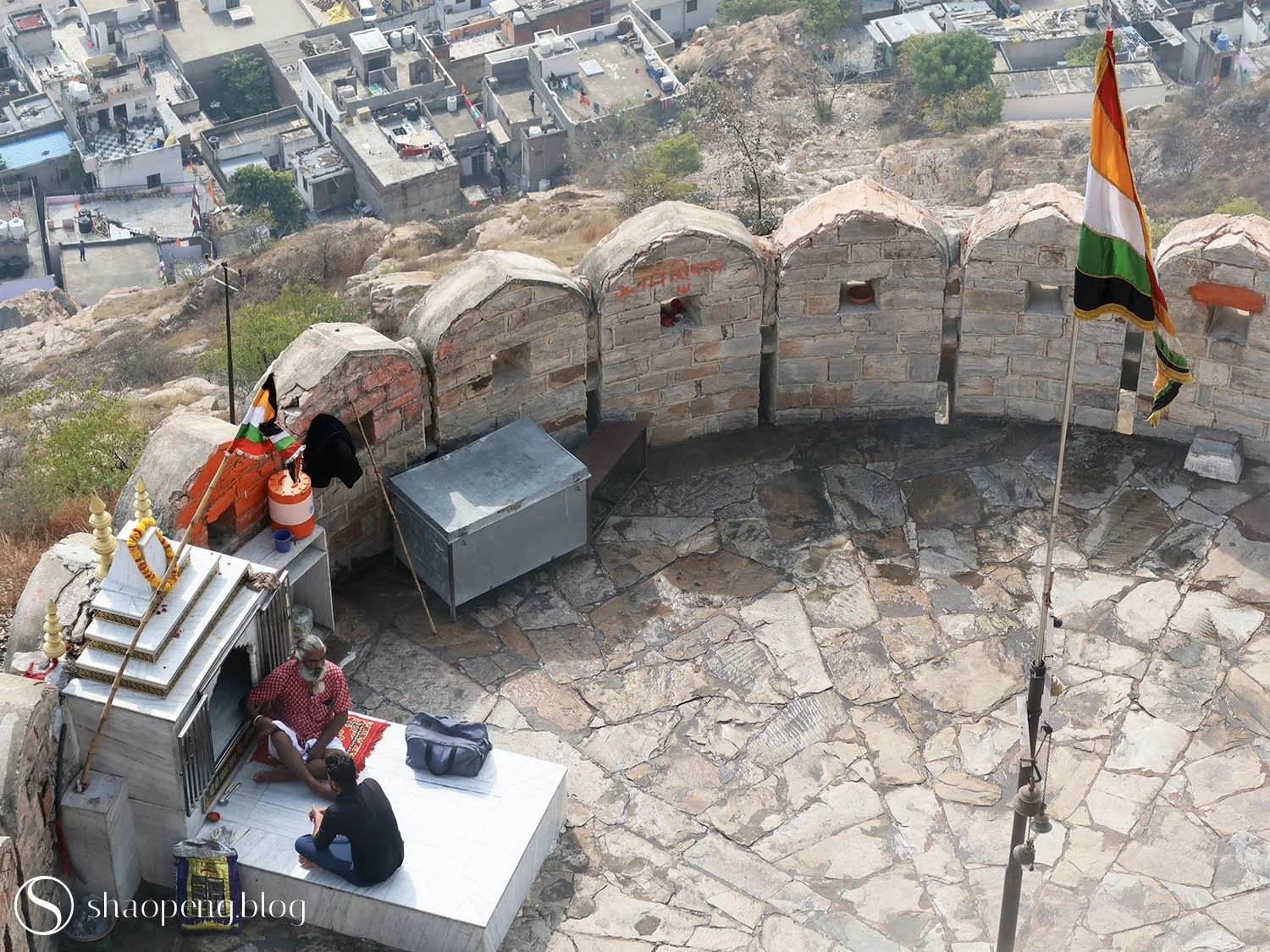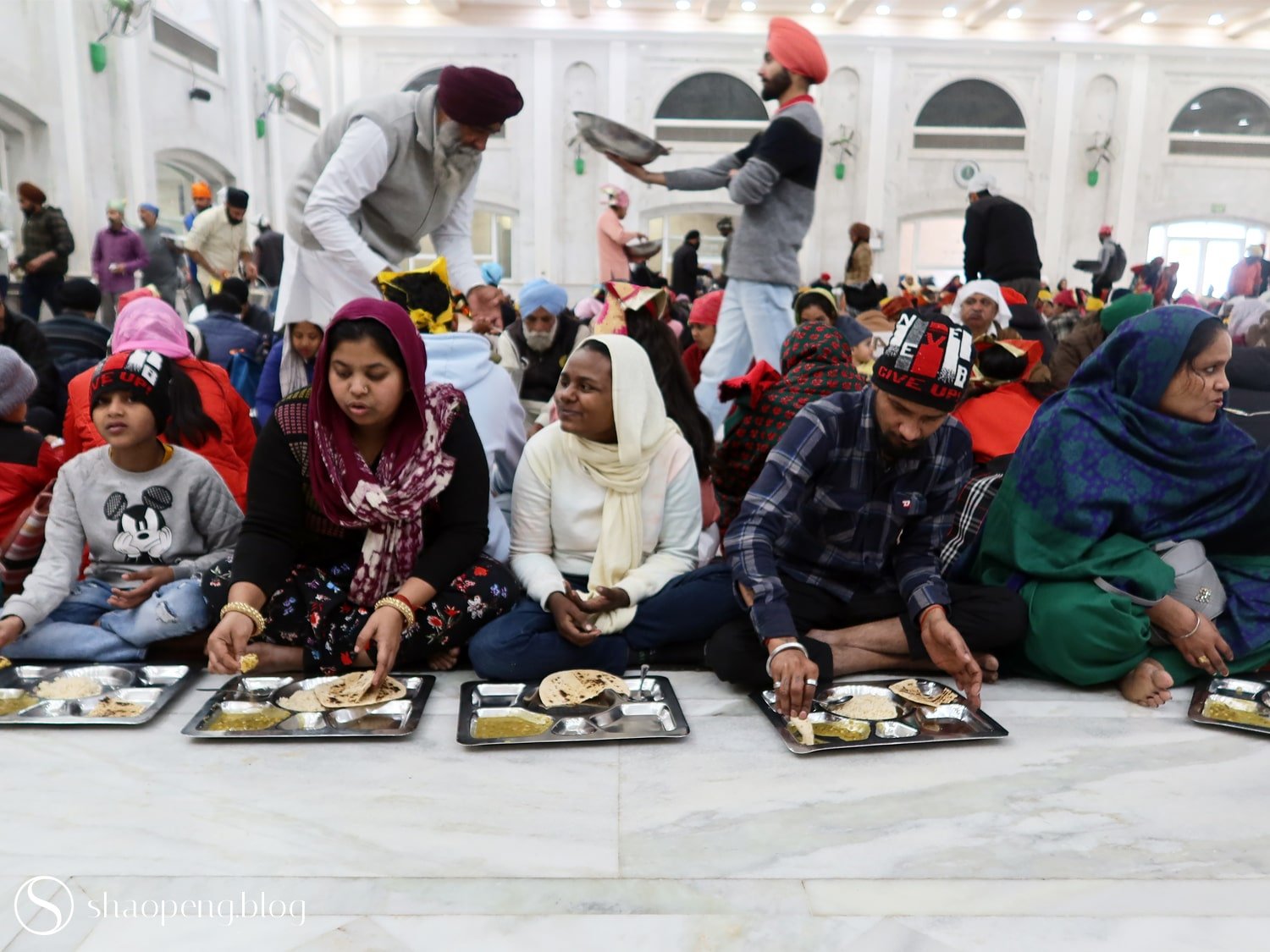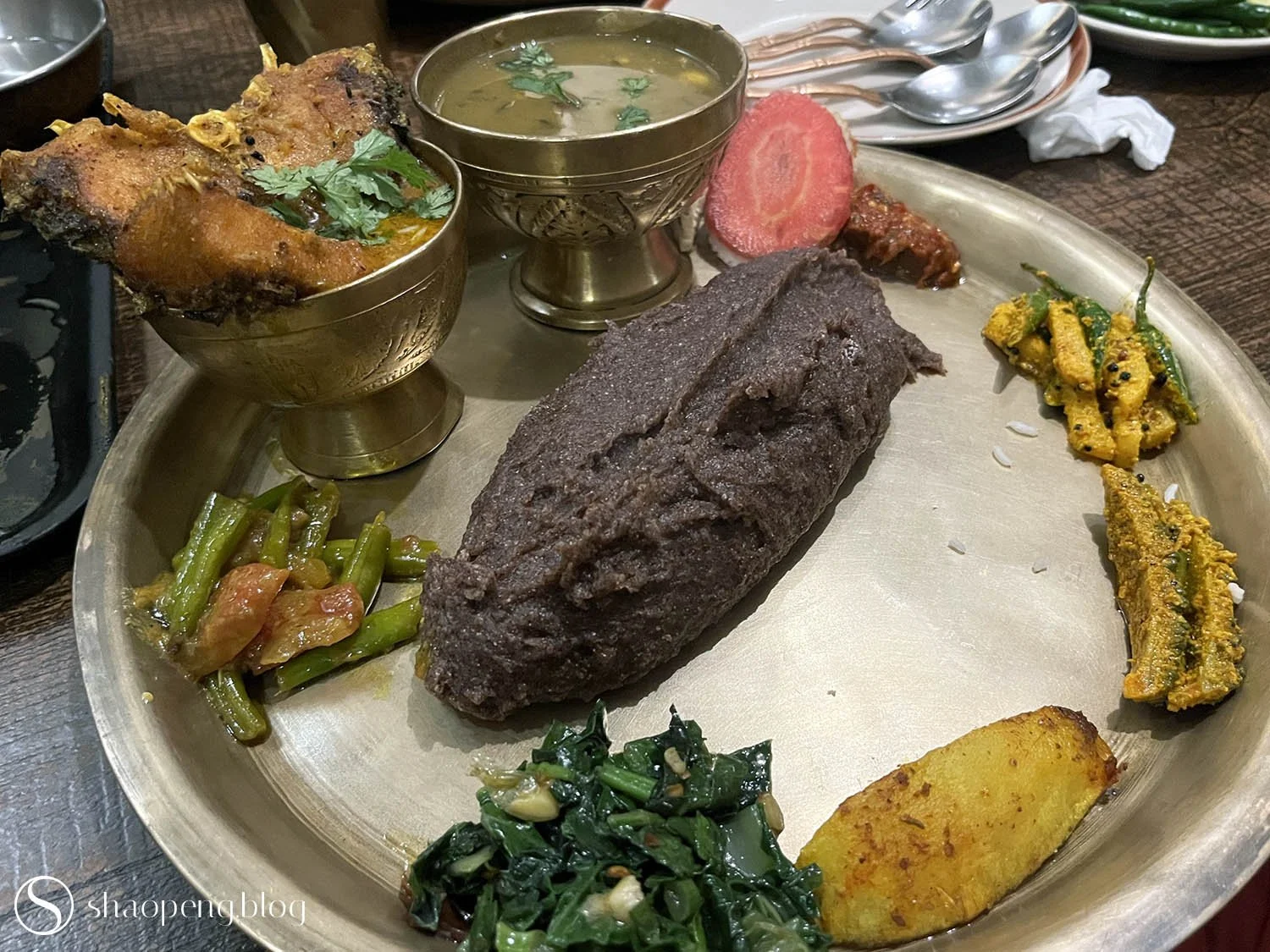Wander in India: Standing at the Crossroad of Faiths
From ancient temples to sacred rivers, nowhere else have I encountered such a vibrant mosaic of religious diversity as in India.
Sense of Wander: ★★★★★
The Qutub Minar complex in Delhi, a UNESCO World Heritage Site, showcases a unique blend of Islamic and Hindu architectural traditions.
DELHI, India — With its culture deeply rooted in the ancient teachings of the Vedas, India has long been revered as a haven for spiritual seekers. On my recent trip to this “sanctuary,” I found myself captivated by the symphony of devotion played in every corner.
From the rhythmic Sanskrit chants resonating within centuries-old temples nestled amidst rocky mountains to the stirring calls to prayer that reverberated through the vibrant streets of the city, India emerges as a melting pot of faiths.
In fact, on my first night in Delhi, while staying near the Delhi train station, I was awakened before sunrise by the sound of the aarti playing on speakers. It wasn’t until later that I realized the sound likely came from the Hindu temple right across the street.
While Hinduism may be predominant, the fabric of India’s religious landscape is interwoven with threads of Islam, Sikhism, Buddhism, Jainism, and myriad other beliefs, each contributing to the rich tapestry that defines this remarkable nation. While exploring India, I couldn’t help but notice how religion is deeply ingrained in people’s everyday lives, manifesting itself through sound, smell, and flavour that captivated all of my senses.
I’ve also been fortunate to encounter people practicing different faiths, whether by striking up a conversation with them or simply sitting down together to share a meal. If you share my passion for the nation’s religious diversity, join me as I share my experiences encountering various faiths during my stay in India:
The Nahar Singh Bhomiyan Temple, a Hindu shrine, sits atop the tower of the Nahargarh Fort in Jaipur.
Hinduism is the heartbeat of India
Hinduism, often regarded as the heartbeat of India, pulsates through the country’s veins, shaping its culture, traditions, and way of life.
With approximately 80% of the nation’s population being Hindu, it’s no surprise that Hinduism’s influence permeates every aspect of Indian society. During my time in India, it’s rare to stroll down a street without encountering a Hindu temple or shrine nestled along the roadside, a constant reminder of the deep spiritual connection that resonates throughout the land.
My visit to the Swaminarayan Akshardham (Read “Wander in India: Swaminarayan Akshardham”) left a lasting impression on me. Despite the temple’s relatively recent construction, completed only in 2005, an indescribable sense of serenity enveloped me the moment I stepped barefoot into the Akshardham complex.
While my experience at Akshardham deeply touched my heart, it was my visit to the cluster of temples near the Galtaji Temple in Jaipur that remains most memorable. At Shri Gyan Gopal Ji Temple, I received the chandan tilak — a traditional paste made with pure sandalwood — on my forehead from a Hindu priest, and had my first kalava — a red-yellow coloured ritual protection thread — tied around my wrist. Though a simple ritual, it left me feeling profoundly blessed and protected. As I write this, the kalava remains on my wrist, a tangible reminder of that sacred moment.
For me, Hinduism is more than just a religion, but the very rhythm of life in India. Despite having studied Indian art history a decade ago during my postgraduate studies, I still find it challenging to fully comprehend a religion as multifaceted as Hinduism. Yet, delving ito its depths is essential for understanding India and its people.
To deepen my understanding, I recently embarked on a journey of learning the Bhagavad Gita with Swami Tadatmananda. This revered scripture, comprising 700 verses, is an extract from the epic Mahabharata and holds profound significance in Indian culture. I also have plans to study Hindi next year — a decision that seemed unimaginable before my trip to India. By doing so, I hope to delve deeper into India’s arts and culture, enabling me to better appreciate the richness of its diverse heritage.
Here’s what’s next on my bucket list:
Varanasi, Uttar Pradesh
Khajuraho Group of Monuments, Madhya Pradesh
Hoysaleshwara Temple, Halebeedu, Karnataka
Kailasa Temple, Maharashtra
Ellora Caves, Maharashtra
Konarak Sun Temple, Odisha
Group of Monuments at Mahabalipuram, Tamil Nadu
Great Living Chola Temples, Tamil Nadu
Kakatiya Rudreshwara Ramappa Temple, Telangana
The Taj Mahal is, amongst other architectural marvels in Agra, the epitome of the Mughal Empire’s cultural prowess.
Islam is a cultural gem in India
During my first trip to India, I found myself immersed in the allure of historic monuments left behind by the Mughals — a Muslim dynasty that once reigned over vast stretches of the Indian subcontinent during the 16th and 17th centuries. As I traversed northern India, particularly in the cities of Delhi and Agra, I was fascinated by the majestic palaces, mosques, and tombs that bore witness to the grandeur of the Mughal Empire.
To truly appreciate the architectural splendour and cultural heritage of the Mughals, one must not miss Agra: the capital of the Mughal Empire at its zenith. Iconic landmarks include the Taj Mahal, the Agra Fort, the Tomb of I'timad-ud-Daulah, Jama Masjid and the Tomb of Akbar. In Delhi, don’t miss the UNESCO-listed Qutub Minar, the Red Fort, Humayun’s Tomb, and the Jama Masjid.
For those curious to explore a Muslim quarter, I highly recommend taking a detour to Nizamuddin, just across the street from Humayun’s Tomb in Delhi, where you can immerse yourself in the rhythm of Muslim everyday life.
As you wander through the bustling streets of Nizamuddin, you’ll hear the call to prayer, or adhan. You’ll encounter Muslim men adorned with traditional rounded cap called kufis — some in plain cotton, others in more intricate crochet designs. Amidst the labyrinthine alleyways, the fragrance of ittar — a natural essential oil distilled from flowers and plants — will tantalise your senses, offering a unique olfactory experience distinct from conventional perfumes.
While in Agra, I had the privilege of attending a Muslim wedding (read “Wander in India: Agra the City of Love”), which offered me a unique glimpse into the distinctive aspects Muslim life in the city.
In contrast to my experiences in predominantly Muslim countries, I encountered a fascinating cultural fusion in Agra. Here, the integration of both Indian and Hindu traditions — albeit with nuanced differences — into Muslim life was evident.
Seeing Muslim women adorned in Indian sarees and traditional jewellery served as a vivid illustration of this synthesis. Additionally, the sight of married Muslim women wearing bindi on their foreheads, along with the groom wearing the noton ki mala (“garlands of money”) around his neck — an obvious influence of northern Indian custom — further testifies to this cultural blend.
Today, India is home to approximately two hundred million Muslims, constituting the largest minority group in this predominantly Hindu nation. However, their significance extends beyond religious belief, as the cultural legacy left by their predecessors continues to enrich India’s diverse cultural landscape.
Muslims are seen praying towards the mihrab, or prayer niche, of Delhi’s Jama Masjid.
Here’s what’s next on my bucket list:
Bahmani Monuments at Gulbarga, Karnataka
Bahmani and Barid Shahi Monuments at Bidar, Karnataka
Adil Shashi Monuments at Bijapur, Karnataka
Qutb Shahi Monuments, Hyderabad
Jama Masjid, Ahmedabad
Visitors to Gurudwara Sri Bangla Sahib around noon are treated to the unique experience of partaking in the communal meal, or langar.
Sikhism is a beacon of equality in India
I’ve long been aware of Sikhism as a religion, but my interest was sparked only recently — a few months ago — when I attended Gurpurab (a Sikh festival celebrating anniversary of a Guru’s birth) and experienced my first langar, or communal meal (read "A Peek into Gurpurab: Sikhism's Festive Tradition").
With my curiosity towards Sikhism growing prior to my trip to India, I was eager to visit the Gurdwara — a place of worship for Sikhs — in Delhi.
The first Gurdwara I visited was Gurudwara Sis Ganj Sahib, nestled in Chandni Chowk — a bustling shopping area brimming with markets selling traditional sarees, jewellery, essential oils, sweets, and spices. Stepping into the Gurdwara amidst the chaos of bustling lives, I was surprised to find that this sanctuary for Sikh followers emitted such a serene presence, despite the rain outside.
On my last day in India, I made sure to include Gurudwara Sri Bangla Sahib in my itinerary. Here, I had the opportunity to participate in the langar amidst the largest crowd of people I’ve ever encountered. While the meal consisted of simple fare — jeera rice, roti, and dal — the experience was profoundly fulfilling. It wasn’t just about the food; it was the chance to dine with a hall filled with strangers — many of whom I’ll likely never cross paths with again in this lifetime.
My langar experience at Gurudwara Sri Bangla Sahib provided a firsthand insight into the core principle of equality in Sikhism. Regardless of social status, ethnicity, religion, or background, everyone sat together on the same level, sharing a simple meal as equals. This embodiment of equality within the langar exemplifies Sikhism’s fundamental belief in the inherent worth and dignity of all individuals, fostering a sense of inclusivity within a nation that is home to a diverse array of communities.
The golden dome of Gurudwara Sri Bangla Sahib lends a captivating charm to Delhi’s skyline.
Here’s what’s next on my bucket list:
Sri Harimandir Sahib at Amritsar, Punjab
Gurdwara Manikaran Sahib Ji, Himachal Pradesh
Takhat Sachkhand Shri Hazur Abchalnagar Sahib Gurudwara, Maharashtra
Hemkund (Hemkunt) Sahib, Uttarakhand
This nighttime view shows the Tibetan Buddhist Temple nestled in the heart of Majnu-ka-tilla, emanating a tranquil glow amidst the bustling cityscape."
Buddhism is still present in India
During my first trip to India, I intended to make a stopover at Majnu-ka-tilla, a quaint neighborhood nestled in the northern outskirts of Delhi. Established in the 1950s, this area exudes a unique charm, boasting streets brimming shops selling Tibetan and Nepali handicrafts.
Arriving amidst a heavy downpour, I missed out on experiencing the unique atmosphere of “Mini Tibet” as captured in photos shared by fellow travellers online. With fewer people out on the streets due to the rain, I didn’t get to witness the typical scenes of monks in saffron-coloured robes or people of the highlands adorned in their traditional attire. I did, however, indulge myself in a delicious Nepali thali, relishing every bite of dhindo (a Nepali staple food primarily made of buckwheat).
Despite its modest size, Majnu-ka-tilla is home to a Buddhist temple, serving as a sanctuary for Tibetan Buddhism. As I wandered the temple grounds, I found solace in the rhythmic rotation of prayer wheels. I silently hoped for a sunlit return to fully explore this place.
While Buddhism represents a minority religion in India today — with less than 1 percent of the population identified with Buddhism as their religion — its historical and cultural imprint remains palpable.
Even today, India boasts a renowned Buddhist pilgrim trail, encompassing numerous sacred sites that follow the footsteps of Gautama Buddha. From Bodh Gaya, where he attained enlightenment, to Sarnath, where he delivered his first sermon, and Kushinagar, where he attained Mahaparinirvana, this trail offers spiritual seekers an opportunity to trace the footsteps of the Buddha and immerse themselves in the rich heritage of Buddhism in India.
Having been raised in a predominantly Buddhist environment, I’ve long felt a deep connection with Guanyin — a bodhisattva revered as the embodiment of compassion. Despite not identifying myself as a Buddhist, I’m intrigued by the idea of exploring the pilgrim trail and soaking in the spiritual vibe of Dharmasala, a place steeped in Buddhist traditions and — as I was told — good energy!
This fish thali served at a Nepali restaurant in Majnu-ka-tilla offers a taste of Nepali cuisine.
Here’s what’s next on my bucket list:
Ajanta Caves, Maharashtra
Elephanta Caves, Maharashtra
Dharamshala, Himachal Pradesh
Buddhist Monuments at Sanchi, Madhya Pradesh
Mahabodhi Temple Complex at Bodh Gaya, Bihar
Like a blooming lotus flower, the Lotus Temple in New Delhi beckons architecture enthusiasts and those yearning for a getaway from the city’s hustle and bustle.
Bahá’í faith finds home in India
The Lotus Temple, nestled in New Delhi, is a sanctuary amidst the bustling cityscape. Its one-of-a-kind lotus-shaped architecture, reminiscent of a blooming lotus flower, makes it a prominent landmark in the city.
Like many visitors, I was drawn to this place of worship without initially realising it is a Bahá’í House of Worship. The Bahá’í Faith, founded in the 19th century by Bahá’u’lláh, stresses on the unity of all people, rejecting notions such as racism, sexism, and nationalism.
The term “Baháʼí” (بهائی) originates from Arabic and denotes the “glory” or “splendour” of God.
The Baháʼí Faith surged in popularity across India during the latter half of the 20th century. This led to the construction of the Lotus Temple, marking a significant milestone as India’s first Baháʼí house of worship. By the dawn of the 21st century, India had emerged as the epicenter of the Baháʼí community, boasting the largest congregation of followers.
Despite its welcoming stance to all visitors, the Lotus Temple maintains strict entry limitations, accommodating only 100 individuals per time slot. This can lead to queues forming outside during peak times.
The wait is indeed worthwhile — once inside, your gaze is met by a mesmerising ceiling design, evocative of traditional mosque domes but infused with contemporary flair through its sleek curves. Enclosed within this half-blooming lotus sanctuary, one feels as though they too, like the lotus emerging from the mud untainted, are being purified of the burdens carried upon their shoulders.
It’s no coincidence the temple is shaped like a lotus flower, a symbol of purity and beauty in religions such as Hinduism and Buddhism.
Next time you yearn for an escape from the mundane or simply a moment of reflection, be sure to stop by the Lotus Temple.
The Sanskrit character “Om,” representing the primal sound of the universe, is ubiquitous across India.
India boasts a kaleidoscope of faiths, where the coexistence of diverse religions waves a tapestry of unity. Beyond Hinduism, Islam, Sikhism, Buddhism, and Bahá’í, lies Jainism — an ancient religion originating in India over 2,500 years ago — that beckons exploration.
In time, I hope to delve deeper into each of these religions — not only to comprehend India and its people, but to unravel the ultimate truths humanity seeks. In the meantime, I’m mindful that this journey through India’s rich religious and cultural panorama is an endless odyssey.
Reference:
Maizland, L. (2024, February 28) India’s Muslims: An Increasingly Marginalized Population. Council on Foreign Relations. https://www.cfr.org/backgrounder/india-muslims-marginalized-population-bjp-modi











